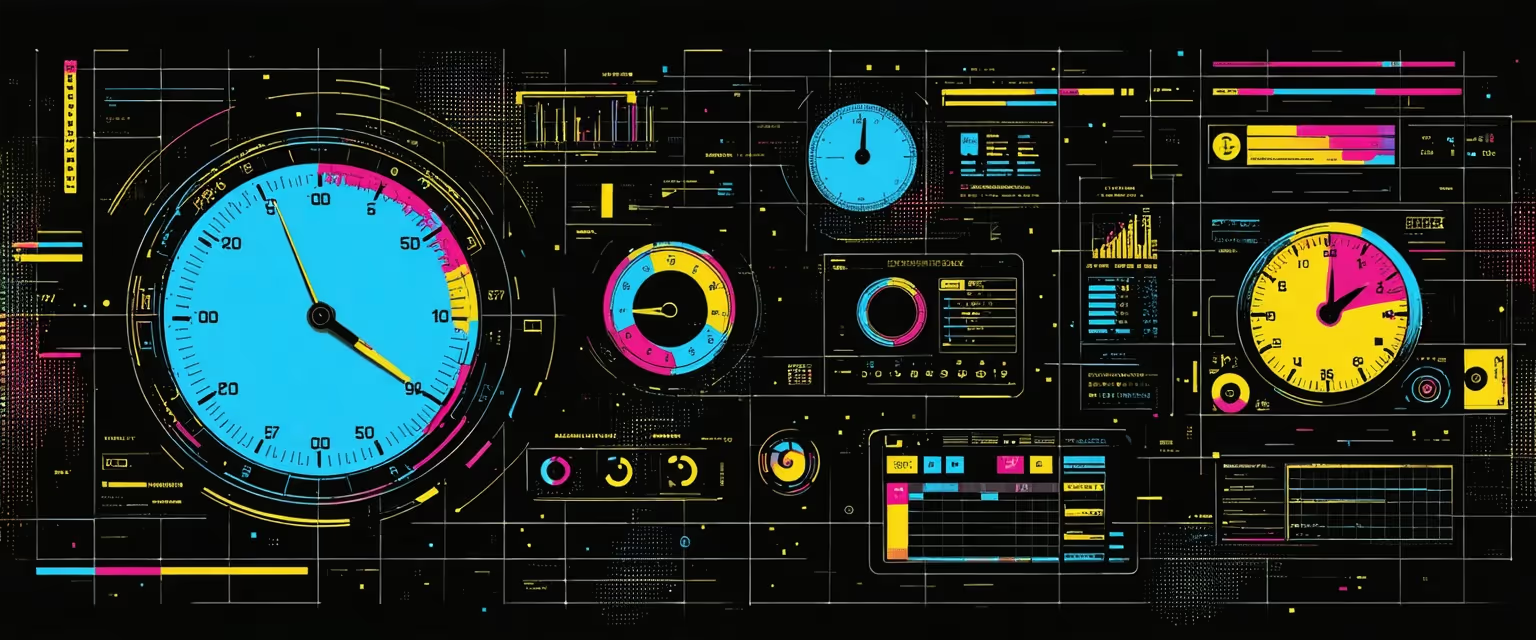All Posts
Marketing document handling
Ultimate Guide to Automating Brand Guidelines Scheduling with Datagrid AI

Discover how to automate brand guidelines scheduling in marketing with Datagrid AI. Enhance consistency and efficiency in your campaigns effortlessly.
Struggling to maintain consistent brand guidelines amid complex campaigns? Automating brand guidelines scheduling can be a game-changer. Many marketing teams face data silos that trap customer data and brand assets, hindering personalization and campaign optimization. Without integrated data and automation, your marketing efforts are limited.
Fortunately, Agentic AI and its Data Connectors break down these silos by seamlessly integrating information across platforms. In this article, we'll explore how these intelligent connectors work, why automating brand guidelines scheduling matters, and how to implement this process for immediate impact with Datagrid's solutions.
Understanding Brand Guidelines and How to Automate Their Scheduling in Marketing
Brand guidelines are comprehensive documents that define how your brand should be presented across various marketing channels. They serve as the foundation for maintaining a consistent brand experience for prospects and customers, whether they're interacting with your website, social media profiles, advertisements, or other touchpoints.
At their core, brand guidelines typically encompass two primary components:
- Visual Identity - This includes your:
- Logos and their proper usage
- Typography selections
- Image and composition styles
- Color patterns and palettes
- Brand Voice - According to the Content Marketing Institute, this should address:
- Word and sentence length preferences
- Stance on clichés and jargon
- Use of contractions and colloquialisms
- Appropriate pronouns and tone variations across channels
The purpose of these guidelines goes beyond simple aesthetic consistency. They act as crucial tools for maintaining brand integrity and recognition while addressing several common challenges organizations face.
Without properly documented guidelines and processes for automating brand guideline creation and scheduling, teams often struggle with time-consuming manual processes to ensure brand consistency. Marketing materials may require frequent revisions, and onboarding new team members becomes more complicated without clear references.
Most critically, the absence of automated brand guideline scheduling significantly increases the risk of inconsistencies in your brand presentation. These inconsistencies can confuse customers and dilute brand recognition, undermining the trust you've built with your audience.
Effective guidelines, like those created by Netflix, clearly specify both correct applications and prohibited uses of brand elements, providing a reliable reference point for anyone creating branded content.
The Challenges of Manual Brand Guideline Scheduling and Maintenance
Managing brand guidelines manually creates significant operational hurdles that can impact your organization's efficiency and consistency. I've seen firsthand how these challenges compound over time across brands of all sizes.
Time-Intensive Processes
Manual scheduling and maintenance of brand guidelines eat up hours. Creating comprehensive schedules requires high levels of communication and coordination across multiple stakeholders, leading to delays and complications.
The process of aligning individual contributors' schedules wastes countless hours on administrative tasks instead of strategic brand development. Each step—from brainstorming and researching to outlining and refining content—consumes resources that could serve better purposes.
Error-Prone Operations
The most concerning aspect of manual brand guideline management? It's wildly prone to errors. Due to the tedious nature of the task, mistakes happen constantly:
Misrecord errors: Information incorrectly entered from the start
Insertion errors: Extra characters or elements added unintentionally
Deletion errors: Missing components that alter brand specifications
Swapping errors: Elements rearranged improperly
These inaccuracies can seriously damage your brand consistency. According to industry research, organizations can incur substantial financial losses annually due to data entry errors and related inefficiencies.
Inconsistency Issues
Without standardized processes and automated scheduling, team members interpret guidelines differently, leading to inconsistent brand implementation.
When projects change scope or when guidelines aren't clearly communicated, these variations multiply, requiring multiple revisions and creating further delays.
The lack of a centralized system means updates might get lost in email threads or scattered across various platforms, causing misalignment between departments.
Scalability Limitations
As your brand grows, manual processes become impossible to maintain. Traditional methods struggle to scale with rising demand, resulting in:
- Processing backlogs as volume increases
- Quality control issues when teams expand
- Workforce limitations that compound scheduling problems
- Difficulties in standardizing formats across different markets or divisions
Together, these challenges create significant barriers to maintaining consistent, high-quality brand guidelines that evolve with your business needs.
The Relevance of Automating Brand Guidelines Scheduling in Marketing
Marketing automation uses technology to streamline and measure repetitive marketing tasks and workflows. It enables businesses to operate more efficiently, provide personalized customer experiences, and scale their marketing efforts effectively. Traditional manual marketing processes, including brand guideline scheduling, simply can't meet customers' growing expectations.
Learning how to automate brand guidelines scheduling in marketing is crucial. Marketing automation continues to grow in importance, highlighting why marketers need to integrate automation into their strategies to accelerate business growth and efficiency.
At its core, marketing automation creates systems that automatically:
- Send personalized emails based on customer behaviors
- Segment audiences for targeted campaigns
- Manage social media interactions
- Track and nurture leads through the sales funnel
- Automate content briefs scheduling
- Schedule and update brand guidelines efficiently
The benefits of marketing automation span multiple dimensions:
Enhanced Operational Efficiency
Marketing automation saves time by eliminating repetitive tasks like scheduling posts or sending follow-up emails. Automating brand guidelines scheduling allows marketers to focus on strategy and creativity rather than mundane activities.
It also reduces costs by minimizing the need for extensive manual labor, while providing data-driven insights that help teams identify and prioritize the best-performing content.
Consistent Brand Standards
Automated processes reduce the risk of human error, ensuring consistent messaging and execution across all marketing channels.
Automating your brand guidelines scheduling strengthens brand identity and builds trust with customers through reliable, high-quality interactions.
Improved Customer Experiences
Businesses can deliver relevant content quickly by analyzing data and automating personalized interactions, improving engagement and loyalty.
Marketing automation enables companies to track customer interactions across various channels and deliver tailored content at each stage of the customer journey.
Real-Time Opportunity Capture
Data automation lets you access and analyze data in real time, providing instant feedback on campaigns and allowing for quick adjustments.
This agility enables businesses to respond to customer behavior in the moment through triggers that prompt personal, contextually relevant interactions.
By streamlining marketing efforts and learning how to automate brand guidelines scheduling, marketing automation not only improves operational efficiency but also creates seamless customer experiences that drive loyalty and growth.
Step-by-Step Guide on How to Automate Brand Guidelines Scheduling in Marketing
Automating your brand guidelines scheduling can significantly streamline your brand management processes and ensure consistent implementation across your organization. Here's how to set up an effective automation system for your brand guidelines.
Setting Up Brand Guidelines
Before you can automate, you need to have well-structured brand guidelines in place:
- Identify and define all key elements of your brand, including logos, colors, fonts, tone of voice, imagery, and messaging that reflect your brand's values and personality.
- Upload all relevant brand elements to a central location where they'll be accessible to team members who need them.
- Clearly articulate the rules for how each element should be used, including usage scenarios, restrictions, and best practices to maintain brand consistency. Additionally, consider ways to automate marketing design specifications to streamline design processes.
- Create different versions of your brand guidelines tailored to various audiences, such as internal teams, external partners, or customers.
- Incorporate interactive elements like live previews, color pickers, or font testers to enhance engagement and usability.
Selecting Appropriate Automation Tools
Once you've established your brand guidelines, the next step is selecting the right automation tools to support your brand management:
- Choose a brand management platform that serves as the foundation of your automation strategy. Popular options include Frontify, Bynder, and Brandfolder.
- Evaluate AI scheduling tools based on these key criteria:
- Compatibility with your existing software and platforms
- Customization options to meet your specific requirements
- Security features to protect sensitive brand information
- User-friendly interface to encourage adoption
- Look for scheduling assistants that offer:
- Seamless integration with various calendar platforms like Google Calendar
- Integration capabilities with team collaboration tools such as Slack, Monday, and Asana
- Automatic time zone adjustments for teams operating across different geographical areas
Implementing Automation Processes
With your brand guidelines and automation tools in place, it's time to implement the automation processes:
- Define clear goals for your automation efforts, such as increasing brand consistency, reducing manual work, or accelerating approval processes.
- Identify all data sources that will feed into your automation system, which may include:
- CRM systems
- Website analytics
- Social media platforms
- Email marketing platforms
- Customer feedback channels
- Configure your brand management platform to generate and update brand guidelines automatically based on the assets and rules you've established.
- Set up automated workflows for routine brand management tasks like asset distribution, update notifications, and approval processes.
- Ensure your team understands how to use the automation tools effectively by providing appropriate training and resources.
Monitoring and Adjusting Processes
After implementing your automation processes, ongoing monitoring is essential for success:
- Regularly audit your automated brand guideline processes to ensure they're functioning as intended and delivering the expected results.
- Collect feedback from users to identify any pain points or areas for improvement in your automation system.
- Track relevant metrics like time saved, consistency improvements, or error reduction to measure the impact of your automation efforts.
- Make adjustments to your automation processes as needed, refining rules, workflows, or tool configurations for better results.
- Stay updated on new automation features and capabilities that could further enhance your brand guideline management.
By following these steps, you'll learn how to automate brand guidelines scheduling in marketing effectively, creating an efficient automated system for managing and scheduling your brand guidelines, ensuring consistent brand representation while reducing manual effort.
Identifying and Mitigating Risks in Automating Brand Guidelines Scheduling
While automation offers tremendous benefits, it's essential to understand and mitigate the associated risks to ensure successful implementation. Being aware of these potential pitfalls will help you avoid common mistakes that organizations face when embracing automation in brand guidelines scheduling.
Balancing Automation with Human Oversight
One of the most significant risks is over-automation. According to McKinsey research, while about half of all activities performed by the global workforce could potentially be automated with current technologies, less than 5% of occupations are candidates for full automation.
Removing human judgment entirely from processes can lead to impersonal customer interactions and decreased satisfaction.
Many companies have rushed to implement extensive automation through "bot armies" only to find that scaling these solutions is more complex than anticipated. What may seem like a standard process often has numerous variations, complicating automation programming.
Data Security and Privacy Concerns
Automation systems handle sensitive information, making data security a critical consideration. Implementing strong encryption (both for data at rest and in transit), robust authentication methods, and proper access controls are essential safeguards.
With increasing regulations like GDPR, organizations must be transparent about data collection practices. When evaluating automation solutions, consider:
- The provider's history of data breaches
- The robustness of privacy policies and data handling practices
- Compliance with relevant standards (GDPR, CCPA, HIPAA, etc.)
Addressing Bias and Ethical Considerations
AI bias is a significant concern when implementing automated systems. Since AI is developed by humans who naturally possess biases, this can lead to discriminatory outputs affecting various attributes such as gender, religion, and race.
Regular monitoring and auditing of automated systems can help identify and correct such biases.
Preparing Your Team
Successful automation requires proper training and preparation. Team members need to understand how to work alongside automated systems, interpret their outputs, and know when human intervention is necessary.
Developing clear protocols for handling exceptions and system failures is equally important for maintaining operational continuity.
By thoughtfully addressing these risks before and during implementation, you can maximize the benefits of automating brand guidelines scheduling while minimizing potential drawbacks.
How Agentic AI Simplifies Marketing Document and Data Handling
Agentic AI is changing how marketing professionals manage documents and data, providing powerful capabilities that enhance targeting, engagement, and analysis—such as PDF data extraction automation. These autonomous AI systems streamline operations and improve decision-making across multiple marketing functions.
Intelligent Audience Targeting
With Agentic AI, identifying high-potential prospects becomes dramatically more efficient. The technology analyzes vast datasets to create precise audience segments based on buyer propensity scores, focus marketing efforts on individuals most likely to convert, and tailor messaging to specific audience characteristics.
This capability lets you implement techniques like lookalike modeling, where AI identifies common traits among your best customers and finds new prospects with similar attributes. The result is more precise market segmentation that resonates with different customer groups and drives higher conversion rates.
Automated Data Enrichment
Maintaining fresh, accurate marketing data is critical but time-consuming. Agentic AI automates this process by cross-referencing data points across multiple sources to uncover key insights, automatically updating contact information and adding relevant industry details, and providing accurate homeowner and household information for personalized outreach.
This lead enrichment automation ensures you're always working with high-quality information, saving valuable time while improving the effectiveness of your marketing campaigns.
Multi-Channel Engagement Optimization
Agentic AI helps optimize your multi-channel marketing strategies by integrating communication channels to analyze engagement patterns, adjusting outreach timing based on engagement data, and maintaining consistent messaging across all platforms.
With a unified view of audience interactions across email, social media, and other channels, you can automate email outreach and other communications with perfect timing and consistent branding.
AI-Powered Analytics and Reporting
The robust analytics capabilities of Agentic AI provide you with strategic advantages through tracking key engagement metrics across all channels in real-time, identifying patterns in successful interactions using AI-powered analysis, and generating detailed reports on campaign performance.
These insights allow for data-driven decisions that continuously improve your marketing strategy. Rather than relying on static traits and past purchase behaviors, AI solutions enable dynamic segmentation that predicts future customer actions.
Automated Task Execution
By automating routine tasks, Agentic AI frees you to focus on strategic activities by generating and sending personalized communications based on prospect behavior, automating follow-ups across different platforms to maintain engagement, and parsing through interaction logs to provide insights for targeted marketing efforts.
With these capabilities, you can create more targeted campaigns, improve engagement rates, and make data-driven decisions that optimize your marketing strategies and drive better results. The technology continues to evolve, with platforms now hosting multiple agents that cater to various marketing domains, vastly improving productivity and customer engagement.
Simplify Marketing Tasks by Learning How to Automate Brand Guidelines Scheduling
Don't let data complexity slow your marketing team. Datagrid's AI-powered platform is designed for marketing professionals, automating tedious tasks like email campaigns, competitor analysis, and data processing.
By harnessing Agentic AI to automate brand guidelines scheduling, Datagrid reduces manual work, delivers actionable insights, and frees up time for strategic thinking and creativity. Transform your marketing workflows with Datagrid and stay ahead of the competition.
Don't let data complexity slow down your team. Create a free Datagrid account to start streamlining your processes.












